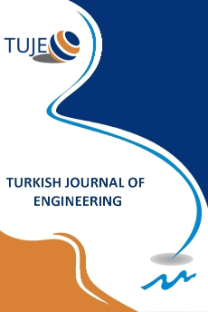INVESTIGATION OF EFFICIENCY OF R717 REFRIGERANT SINGLE STAGE COOLING SYSTEM AND R717/R744 REFRIGERANT CASCADE COOLING SYSTEM
INVESTIGATION OF EFFICIENCY OF R717 REFRIGERANT SINGLE STAGE COOLING SYSTEM AND R717/R744 REFRIGERANT CASCADE COOLING SYSTEM
___
- Alan, A. (2011). The effect of expansion turbine usage on energy potential in dual stage CO2 cooling systems, MSc Thesis, University of Süleyman Demirel, Isparta, Turkey.
- Bingming, W., Huagen, W., Jianfeng, L., Ziwen, X. (2009). “Experimental investigation on the performance of NH3/CO2 cascade refrigeration system with twinscrew compressor.” International Journal of Refrigeration, Vol. 32, No. 6, pp. 1358–1365.
- Çerkezoğlu, B. (2010). Analysis of Cascade Cooling System Using Co2, MSc Thesis, Istanbul Technical University, Istanbul, Turkey.
- Dopazo, J. A., Fernández-Seara, J., Sieres, J., Uhía, F. J. (2009). “Theoretical analysis of a CO– NH cascade refrigeration system for cooling applications at low temperatures.” Applied Thermal Engineering, Vol. 29, No. 8-9, pp. 1577–1583.
- Dopazo, J. A., Fernández-Seara, J. (2011). “Experimental evaluation of a cascade refrigeration system prototype with CO2 and NH3 for freezing process applications.” International Journal of Refrigeration, Vol. 34, No. 1, pp. 257–267.
- Getu, H. M., Bansal, P. K. (2007). “Modeling and performance analysis of evaporators in frozen food supermarket display cabinets at low temperatures.” International Journal of Refrigeration, Vol. 30, No. 7, pp. 1227-1243.
- Kasap, F., Acül, H., Canbaz, H., Erbil, S. (2011). “R744 (CO2) Refrigerant cooling systems, finned tube R744 (CO2) evaporator and gas cooler design principles.” X. National Installation Engineering Congress, İzmir, Turkey, pp. 391-410.
- Onbaşıoğlu, H. (2010). “An Overview of Vapour Compression System Using Natural Refrigerant CO2”. İSKİD ACV&R Journal of Turkey, Vol.2, pp.48-64.
- Özyurt, A., Erdönmez, N., Yilmaz, B., Yilmaz, D., Sevindir, M. K., Mançuhan, E. (2014). “Thermodynamic Analysis and Performance Evaluation of CO2 / NH3 Cascade Cooling System.” 15th International Refrigeration And Air Conditioning Conference, Plant Egineering, Purdue, Indiana pp. 2598-2608.
- Rezayan, O., Behbahaninia, A. (2011). “Thermoeconomic optimization and exergy analysis of CO2/NH3 cascade refrigeration systems.” Energy, Vol. 36, No. 2, pp. 888–895.
- Vestergaard, N. P. (2007). “Danfoss Refrigeration and Air Conditioning Division, CO2 Refrigerant for Industrial Refrigeration”. Danfoss A/S (RA Marketing/MWA), DKRCI.PZ.000.C1.02 / 520H2242.
- ISSN: 2587-1366
- Yayın Aralığı: 4
- Başlangıç: 2017
- Yayıncı: Mersin Uüniversitesi
Ali SÖNMEZ, Ömer GÜLER, Öyküm BAŞGÖZ, Seval Hale GÜLER
AN APPLICATION TO ERROR AND UNCERTAINTY ANALYSIS IN INDUSTRIAL TYPE DRYER EXPERIMENTS
HONEY FORMATION OPTIMIZATION: HFO
Serkan ŞAHİNKAYA, Gamze ÖZGÜROĞLU
İbrahim ÇELİK, Ceyhun YILDIZ, Mustafa ŞEKKELİ
